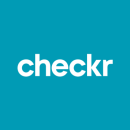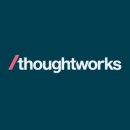Everyone in talent acquisition understands the importance of employer branding, but many organizations still struggle to get it right. To help guide you, this article takes you step by step in how to plan and execute an employer branding strategy.
What Is an Employer Branding Strategy?
An employer branding strategy is a company’s plan for influencing how its employees and the market at large perceive its brand. The goal of an effective branding strategy is to allow a company to control the dialogue about its practices and help it acquire and retain top talent.
What Is an Employer Branding Strategy?
If employer branding is how a company wants its employees and the marketplace to perceive it, then the strategy is the process and practices behind developing that image — it encompasses anything an organization does to appeal to potential candidates and retain current employees.
Why an Employer Branding Strategy Is Important
Your employer brand impacts just about every facet of your business, from recruiting and retention to performance and profitability. Companies with a strong employer brand typically experience higher employee engagement, lower turnover and more recruiting success. Consider the following statistics:
- 86 percent of women and 67 percent of men in the U.S. wouldn’t apply for a job at a company with a bad reputation.
- 75 percent of job seekers consider an employer’s brand before even applying for a job.
- A strong employer brand can reduce your cost-per-hire by 50 percent and increase the number of qualified applicants by another 50 percent.
- To make up for a poor employer brand, companies must offer a 60 percent pay increase to attract top job seekers.
Given all that, your employer brand is not something you want to leave to chance.
See how your employer brand is performing in AI tools like ChatGPT and Google.
How to Plan Your Employer Branding Strategy
1. Align Your Strategy With Organizational Needs
An effective strategy will be shaped by the business’s short- and long-term needs, taking into account everything the organization wants to accomplish and the skill set it will require to do so. Start by answering a few basic questions:
- What objectives will the business pursue over the next 12 to 36 months?
- What new products and services are in the pipeline?
- What talent gaps exist that could prevent us from meeting our obligations?
2. Set Actionable Objectives
An employer branding strategy must help the organization solve a problem or accomplish a goal, and setting actionable objectives is the best way to ensure this happens. While every business must define its own recruitment goals, well-crafted objectives will always share some common traits.
- Target: Identify a specific and reasonable goal the company needs to meet.
- Measure: Establish metrics and adjust along the way.
- Plan: Establish resources, create a content calendar and set a timeline.
- Assign: Divide, conquer and meet deadlines.
3. Define Relevant KPIs
Key performance indicators (KPIs) are metrics used to evaluate the success of an objective. If your goal is to reduce total recruiting costs by 20 percent over a six-month period, cost-per-hire would be an essential KPI. The KPIs you define will vary based on your objectives, but there are some best practices when it comes to selection:
- Consider objectives: The KPIs you select must relate to your stated objectives.
- Attainable and accurate: If KPI data can’t be readily obtained or isn’t 100 percent accurate, the information will do you no good.
- Actionable: When selecting your KPIs, ask yourself: “Can the business influence these metrics, or are they out of our control?” If you can’t influence the KPI, tracking the metric will be futile.
4. Develop a Measurement Plan
A measurement plan ensures you’re equipped to collect and analyze the data you need to make informed decisions. Those unfamiliar with measurement may feel a little intimidated, but developing a plan is a straightforward process that consists of answering a few questions:
- What data will we be tracking?
- How will we collect this data?
- How frequently will we measure?
- How will we analyze the data for insights and opportunities?
- How will we report our findings to project stakeholders?
It’s likely your business already has access to recruitment tools and resources that can help you obtain the needed information:
- Applicant tracking software (ATS) should be your first stop. This will provide a trove of valuable data pertaining to your recruitment efforts.
- Tools like Google Analytics, Kissmetrics and CrazyEgg can help unlock insights from your careers page and other digital properties.
- When in doubt, finance and operations will likely be able to provide you with the business-related metrics you need.
5. Allocate Resources Upfront
Define roles and responsibilities upfront to minimize roadblocks later in the process and help ensure deadlines are met. One of the biggest questions you’ll face when allocating resources to develop an employer branding strategy is whether to keep things in-house or enlist the assistance of an outside expert.
- External agencies: These service providers may be the best option for organizations lacking internal expertise or looking to supplement existing resources.
- Internal teams: Creating an internal employer branding team will be the most economical path for many organizations.
6. Create Target Candidate Personas
A candidate persona is a semi-fictional representation of your ideal candidate, developed to help recruiters better understand the candidates they’re pursuing. It provides insight into the factors that motivate candidates to seek out and accept (or deny) a new position.
Candidate personas require feedback from prospective employees, so conduct some interviews (at least 10) to get the information you need. Recent hires can also provide valuable insights, so include them in your interview schedule. Collect as much information as possible to break down your interview template into segments. Here are a few criteria to consider:
- The basics: job title, salary requirement, qualifying criteria.
- The background: education, work history, specific skill sets.
- The person: personal goals, motivation, personal interests.
Demographics are important factors to consider when targeting candidates. However, be careful not to target too narrow, thus unintentionally excluding populations and reinforcing unconscious biases.
7. Develop a Compelling Employee Value Proposition
The employee value proposition clarifies the expectations of both the candidate and company when a new hire is made. Creating a meaningful EVP is arguably the most important thing you can do when developing your employer branding strategy. It serves as the foundation for your communications materials, influencing everything you say and do when recruiting talent.
8. Examine Your Application Process
In many ways, the application process embodies your employer brand, so make sure you understand what it’s like from the applicant’s point of view. Talk with candidates and recent hires about their experience applying for a role at your company. Doing so will provide your team with an outsider’s perspective on the process to determine areas for improvement. Here are some questions to consider:
- How did they find you?
- Where and when did they apply?
- How did they learn about the company?
- What resources would have been beneficial? This includes recruitment videos, networking events, improved careers page, insight to company culture, etc.
- Were candidates kept informed about their application throughout the process?
- What are key points of communication?
9. Don’t Forget About Retention
Each lost employee can cost as much as two times their annual salary to replace. Taking the time to account for employee retention when creating your employer branding strategy can pay some very tangible dividends:
- Engagement: Seeking feedback from your existing employees demonstrates that the organization values their input and is dedicated to creating the environment they want.
- Profitability: An engaged workforce is a profitable workforce. Companies that report high levels of employee engagement experience 23 percent higher profitability and 18 percent higher productivity.
- Advocacy: When employees understand your employer brand and the factors that make the organization a desirable place to work, they are equipped to share this information with their personal networks.
10. Determine Your Distribution Mix
It’s important to determine which channels you’ll use to communicate with candidates before developing employer branding materials. Not every channel is right for every business, so you’ll want to identify where your ideal candidates spend their time and take your message to them.
This is one area to involve your marketing team. That said, recruiters should still understand the basics of owned, earned and paid media before communicating with candidates.
Owned channels, like your careers page or social media profiles, will likely be your primary resource, but don’t be afraid to explore the realms of paid and earned media. Paying to run display ads on industry websites or posting listings on job boards can guarantee people see your messaging, and investing in great content can increase the odds users share your material with their personal networks.
How to Execute Your Employer Branding Strategy
11. Tailor Employer Branding Materials to Your Candidate Personas
Developing your employer branding materials (careers page, social media campaigns, job descriptions, etc.) can be the most exciting part of the process, but it can be easy to lose sight of the hard work you’ve already done. If properly executed, your candidate personas will provide the insight you need to tell a compelling story to specific candidates, so make sure to leverage them by segmenting your materials by audience.
12. Create a Content Calendar
Whether you’re publishing a recruiting blog, running targeted ads on social media or rolling out new features on your careers page, creating a content calendar can simplify the process and hold people accountable for deadlines.
- Brainstorm ideas: Get a team together and brainstorm big-picture ideas for blog titles, recruitment marketing campaigns, video production and careers page improvements. These examples are a great place to start.
- Consider the budget: Creating compelling content takes time and money, but the investment will pay off in the long run. Focus on driving success for one project at a time. If you take on too much too quickly, your strategy may lose credibility and funding.
- Distribute tasks: Now that you’ve established a master plan, divvy up the work to appropriate managers who will further delegate as needed.
- Set deadlines: Make sure everyone’s calendars are synced and people are held accountable for their content deadlines.
- Adjust as needed: Are you catching on to this theme? Employer branding strategy is not stable. By staying ahead of the trends, you’ll find the best people before they even start looking for jobs.
13. Watch for Common Implementation Roadblocks
Up to 75 percent of organizations struggle to effectively implement strategies. The same study identified some of the most common sticking points during the implementation process, so watch out for these roadblocks:
- Distrust between teams: The majority of managers feel they can rely on their supervisors and direct reports all or most of the time, but only 9 percent said the same thing about colleagues in other functions. An employer branding strategy requires contributions from multiple disciplines, so develop a process that lets cross-functional teams work together in a transparent and productive manner.
- Relying on top-down execution: A strong CEO may be able to drive an efficient strategic process in the short term, but over time this reliance dilutes the ability of team leaders to make hard decisions and execute plans. Mid-level managers should be equipped to drive strategic implementation, so get these stakeholders involved during strategic development and ensure they understand their responsibilities.
- A refusal to adapt: A well-crafted strategy must be given an opportunity to succeed, but refusing to pivot when necessary will only lead to missed opportunities and unaddressed challenges.
14. Make Sure Your Employees Understand the Strategy
Employee referrals serve as a convenient way to find top talent while cutting down on recruiting costs. Turn your team into an army of ambassadors and you’ll be able to cast a wider net in your recruitment efforts. Start with the basics:
- Keep them in the loop: Equip employees to be effective ambassadors by ensuring every member of the organization understands the employer branding strategy and how to communicate it to their personal networks.
- Empower them to communicate: Some firms may feel a little uneasy allowing their employees to communicate on the company’s behalf, but you have to get past it. We live in a connected world, and your employees’ networks are an untapped talent pool.
- Provide some guidance: Whether it’s a few talking points or a formal social media policy, providing your employees with a little guidance will help ensure they remain on message.
How to Optimize Your Employer Branding Strategy
15. Test Your Message
Your employer branding strategy will shape your recruitment messaging, and if your messaging isn’t up to par, it will be almost impossible to meet your objectives. Routine testing is the simplest way to gauge the efficacy of your approach. This may seem a little intimidating, but utilizing a structured methodology will make the process much easier.
- A/B testing: A/B testing is a simple approach that compares two versions of a piece to determine which performs better. Variables are tested one at a time to ensure the tester understands which change was responsible for influencing user behavior. The 1:1 nature of A/B testing makes it simple to see which version is driving optimal results.
- Multivariate testing: With multivariate testing, multiple variables are modified and tested with the goal of determining which combination of variations performs best. Multivariate testing can be useful when your communications materials have multiple elements you wish to test, but you’ll need a larger audience for your results to be statistically significant.
16. Don’t Be Afraid to Course Correct
There will come a time when you need to make some changes to your employer branding strategy to address a weakness or capitalize on a new opportunity. How do you know when it’s time to course correct? By this point, you’ll have done the necessary legwork and collected all the data you need to make an informed decision. Now it’s just a matter of examining what you have:
- Examine your needs: Does your strategy still meet the needs of the organization? If not, it’s time to rethink your approach.
- Examine your KPIs: If your results are falling short, do some digging to determine what’s not working and how you’re going to fix it. On the flip side, if you’ve accomplished all your objectives, set new priorities and begin again.
- Examine your resources: Budgets are finite, and committees are often pulled apart to address other needs. If your resources are no longer capable of accomplishing your goals, it may be time to streamline your strategy. If you find yourself with access to a larger budget or team, however, consider increasing your employer branding investment.
17. Repeat, Repeat, Repeat
There’s no get-rich-quick scheme when it comes to employer branding, but there is one surefire formula for success: Test, measure and repeat.
Once you’ve planned, implemented and optimized your employer branding strategy, start over. Reassess the organization’s needs and determine if your strategy is still relevant. Set objectives to address new challenges or opportunities. Develop new candidate personas and refine your employee value proposition accordingly. Top-performing companies treat their employer branding strategy as a work in progress, never missing an opportunity to refine their approach and improve results.
Remember, employer branding is a circular process, so once you’ve optimized, head back up to step one and prove to stakeholders and team members that employer branding is well worth the investment.
10 Employer Branding Strategy Examples
Tableau makes powerful data visualization tools. It’s also made a powerful careers page, thanks in large part to some eye-catching employee testimonials. Tableau empowered its employees to create data visualizations that align with their personal interests, providing a behind-the-scenes look at the personality of its team. Tableau leverages its product to provide background information on everything from office locations and headcount to customer acquisition and revenue growth.
With its Open blog, Buffer takes the concept of honesty to another level. The blog covers how much time off employees at the company take, how they make hybrid meetups inclusive and what new products are being rolled out and how they’re performing. Absolutely nothing is off limits, which is what makes it such a powerful tool. You may want to shy away from bad news, but it’s always just a Google search away. Addressing it head-on lets you be a part of the conversation and ensures you’re providing potential candidates with insider context.
High-budget recruiting campaigns and an army of professional content creators are well and good, but sometimes a simple approach is all it takes. With its Instagram feed, Zayo celebrates the simple pleasures of life at the company, showcasing the fun activities and great events the team is a part of. A smartphone and a little creativity are all it takes to tell a compelling story.
Girls Who Code uses its Facebook feedback in a unique way. Similar to the infamous #icebucketchallenge, the company created a unique hashtag and an activity that inspires a ripple effect of content and activism. The initiative stays true to the brand and incorporates current trends to optimize reach.
Google has several employer branding videos on YouTube, including some that highlight their intern’s first week. An intern’s first week can be intimidating, especially at a big-name brand like Google, but this video helps allay the fears of potential applicants. For anyone interested in company culture, pursuing a career at the company or preparing for their first day, this video highlights employer branding from a fresh perspective.
It can be difficult to find people eager to be featured in photos — let alone videos — but it’s always helpful to hear from different people who experience the company in their own unique way.
Job seekers want a transparent look at life at your company, and too much massaging can result in copy that reads more like advertising than honest feedback. Checkr’s employee testimonials are detailed and honest, and it’s clear management didn’t take a heavy-handed approach with editing.
Take one look at Checkr’s careers page and you see the difference great photography can make. The shots are professionally composed, lending an air of professionalism. Quality photography is always worth the investment.
Microsoft’s Life Blog tells the unique stories of the organization’s most valuable asset: its people. Microsoft’s editorial staff has done its homework, conducting the sort of in-depth interviews necessary to tell a compelling story. The result is a series of mini-biographies that illustrate the amazing diversity of Microsoft’s team while showcasing the organization’s appreciation of everything they do.
For a textbook example of an excellent culture blog, look no further than the Rackspace Technology Blog from Rackspace Technology. It covers everything from corporate social responsibility and volunteer events to game-a-thons. Readers get a clear understanding of the organization’s core values and culture.
Not many tech companies are lucky enough to be featured in a major series like TechCrunch Cribs the way Slack has been. In Slack’s video, the casual interview style allows the company’s vice president of policy to discuss the office and culture in a more personable way. And while the third-party publicity is certainly beneficial, any company can repurpose the idea of a behind-the-scenes tour. Bring in someone from outside your office to host for an added sense of legitimacy.
ThoughtWorks helps candidates overcome the pre-interview jitters by providing them with a behind-the-scenes look at the hiring process before they apply, easing their nerves and helping them prepare for the interview. It also keeps the organization accountable and maintains a structured hiring process.
ThoughtWorks is fortunate to have a talented team of experts who aren’t afraid to stand on a pulpit and make their voices heard. Its careers page features in-depth employee-authored articles that provide insight on job searches, career advancement and more. Aside from showcasing expertise, this approach gives potential candidates a reason to return.
Frequently Asked Questions
What is employer branding?
Employer branding is the process of building and promoting a company’s reputation among current employees and outside stakeholders like potential candidates and customers. Steps include developing an eye-catching careers page, responding to reviews on employer review sites and sharing employee-created content on social media.
What is an example of employer branding strategy?
Google produces YouTube videos to highlight employee testimonials, including a video that showcases what interns’ first week at the company is like. This serves as an integral part of Google’s employer brand strategy by offering an in-depth look at the company’s culture.














